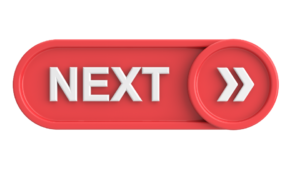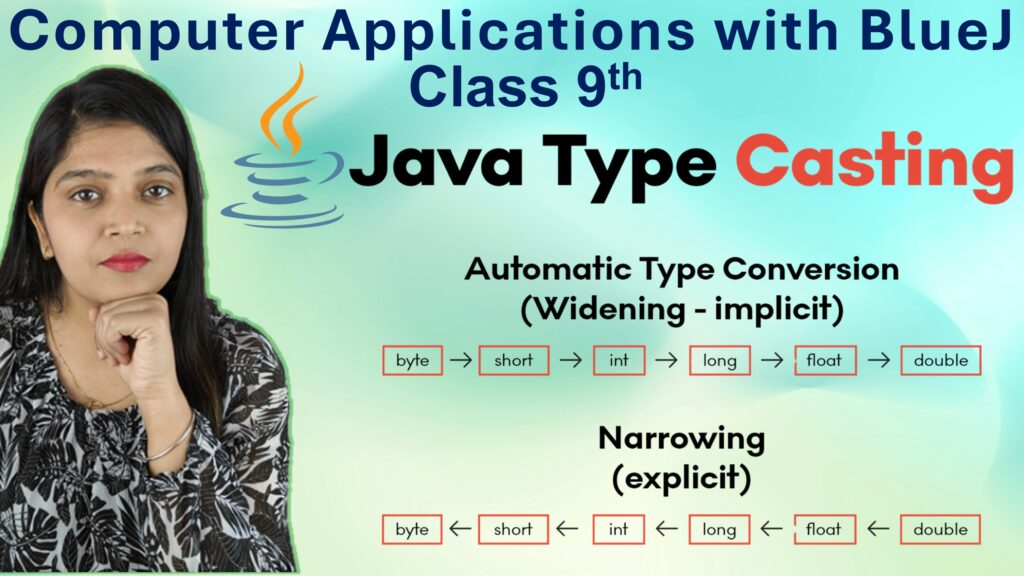Exercise: 1-A
Q1: Express \(\frac{-64}{112}\) as a rational number with denominator 7.
Step 1: We are given the rational number: \(\frac{-64}{112}\)
Step 2: To convert this to a rational number with denominator 7, we first reduce the fraction to its simplest form.
We find the HCF of 64 and 112.
64 = 2 × 2 × 2 × 2 × 2 × 2
112 = 2 × 2 × 2 × 2 × 7
⇒ HCF = 2 × 2 × 2 × 2 = 16
So,
\[
\frac{-64}{112} = \frac{-64 ÷ 16}{112 ÷ 16} = \frac{-4}{7}
\]Step 3: Hence, the rational number with denominator 7 is:\(\frac{-4}{7}\)
Answer: \(\frac{-4}{7}\)
Q2: Express \(\frac{-48}{60}\) as a rational number with denominator 25.
Step 1: We are given the rational number: \(\frac{-48}{60}\)
Step 2: First, reduce the rational number to its simplest form.
Find the HCF of 48 and 60.
48 = 2 × 2 × 2 × 2 × 3
60 = 2 × 2 × 3 × 5
⇒ HCF = 2 × 2 × 3 = 12
So,
\[
\frac{-48}{60} = \frac{-48 ÷ 12}{60 ÷ 12} = \frac{-4}{5}
\]Step 3: Now, convert this rational number to one with denominator 25.
To make the denominator 25, multiply numerator and denominator by 5:
\[
\frac{-4}{5} = \frac{-4 × 5}{5 × 5} = \frac{-20}{25}
\]Answer: \(\frac{-20}{25}\)
Q3: Express each of the following rational numbers in standard form:
i. \(\frac{-12}{30}\)
Find HCF of 12 and 30:
12 = 2 × 2 × 3
30 = 2 × 3 × 5
HCF = 2 × 3 = 6
So, divide numerator and denominator by 6:
\[
\frac{-12}{30} = \frac{-12 \div 6}{30 \div 6} = \frac{-2}{5}
\]
Answer: Standard form: \(\frac{-2}{5}\)
ii. \(\frac{-14}{49}\)
HCF of 14 and 49 is 7:
\[
\frac{-14}{49} = \frac{-14 \div 7}{49 \div 7} = \frac{-2}{7}
\]
Answer: Standard form: \(\frac{-2}{7}\)
iii. \(\frac{24}{-64}\)
Negative denominator is not allowed in standard form.
Move minus sign to numerator:
\[
\frac{24}{-64} = \frac{-24}{64}
\]
Now simplify by HCF of 8:
\[
\frac{-24}{64} = \frac{-3}{8}
\]
Answer: Standard form: \(\frac{-3}{8}\)
iv. \(\frac{-36}{-63}\)
Both numerator and denominator are negative, which cancel out:
\[
\frac{-36}{-63} = \frac{36}{63}
\]
Now simplify:
HCF = 9
\[
\frac{36}{63} = \frac{4}{7}
\]
Answer: Standard form: \(\frac{4}{7}\)
Q4: Compare the following pairs of rational numbers:
i. \(\frac{15}{32}\ and\frac{17}{24}\)
To compare the rational numbers, we make the denominators same (LCM method).
LCM of 32 and 24 = 96
Convert both rational numbers to like denominators:\[
\frac{15}{32} = \frac{15 \times 3}{32 \times 3} = \frac{45}{96} \\
\frac{17}{24} = \frac{17 \times 4}{24 \times 4} = \frac{68}{96}
\]Now compare:
\[
\frac{45}{96} \lt \frac{68}{96}
\]Answer: \( \frac{15}{32} \lt \frac{17}{24} \)
ii. \(\frac{10}{11}\ and\frac{17}{18}\)
LCM of 11 and 18 = 198
Convert both rational numbers to like denominators:
\[
\frac{10}{11} = \frac{10 \times 18}{11 \times 18} = \frac{180}{198} \\
\frac{17}{18} = \frac{17 \times 11}{18 \times 11} = \frac{187}{198}
\]Now compare:
\[
\frac{180}{198} \lt \frac{187}{198}
\]Answer: \( \frac{10}{11} \lt \frac{17}{18} \)
iii. \(\frac{-5}{12}\ and\frac{-3}{4}\)
Convert both to like denominators using LCM of 12 and 4 = 12
\[
\frac{-3}{4} = \frac{-3 \times 3}{4 \times 3} = \frac{-9}{12}
\]Now compare:
\[
\frac{-5}{12} \gt \frac{-9}{12}
\]Because –5 is greater than –9 on the number line.
Answer: \( \frac{-5}{12} \gt \frac{-3}{4} \)
iv. \(\frac{-7}{24}\ and\frac{9}{-20}\)
Note: \( \frac{9}{-20} = \frac{-9}{20} \)
Now find LCM of 24 and 20 = 120
\[
\frac{-7}{24} = \frac{-7 \times 5}{24 \times 5} = \frac{-35}{120} \\
\frac{-9}{20} = \frac{-9 \times 6}{20 \times 6} = \frac{-54}{120}
\]Now compare:
\[
\frac{-35}{120} \gt \frac{-54}{120}
\]Answer: \( \frac{-7}{24} \gt \frac{9}{-20} \)
Q5: Arrange in ascending order:
i. \(\frac{5}{6},\ \frac{7}{9},\ \frac{11}{12}\ and\frac{13}{18}\)
Step 1: Find LCM of denominators (6, 9, 12, 18)
LCM = 36
Convert all fractions to have denominator 36:
\[
\frac{5}{6} = \frac{5 \times 6}{6 \times 6} = \frac{30}{36} \\
\frac{7}{9} = \frac{7 \times 4}{9 \times 4} = \frac{28}{36} \\
\frac{11}{12} = \frac{11 \times 3}{12 \times 3} = \frac{33}{36} \\
\frac{13}{18} = \frac{13 \times 2}{18 \times 2} = \frac{26}{36}
\]Now arrange:
\[
\frac{26}{36} \lt \frac{28}{36} \lt \frac{30}{36} \lt \frac{33}{36}
\]Answer: Ascending order: \( \frac{13}{18},\ \frac{7}{9},\ \frac{5}{6},\ \frac{11}{12} \)
ii. \(\frac{5}{-7},\ \frac{-9}{14},\ \frac{-5}{6}\ and\frac{7}{-12}\)
Note: Rewrite as:
\[
\frac{5}{-7} = \frac{-5}{7},\ \frac{7}{-12} = \frac{-7}{12}
\]Now we compare:
\[
\frac{-5}{7},\ \frac{-9}{14},\ \frac{-5}{6},\ \frac{-7}{12}
\]Convert to common denominator. LCM of 7, 14, 6, 12 = 84\[
\frac{-5}{7} = \frac{-60}{84},\\
\frac{-9}{14} = \frac{-54}{84},\\
\frac{-5}{6} = \frac{-70}{84},\\
\frac{-7}{12} = \frac{-49}{84}
\]Now arrange:
\[
\frac{-70}{84} \lt \frac{-60}{84} \lt \frac{-54}{84} \lt \frac{-49}{84}
\]Answer: Ascending order: \( \frac{-5}{6},\ \frac{-5}{7},\ \frac{-9}{14},\ \frac{-7}{12} \)
iii. \(-2,\ \frac{1}{3},\ \frac{-13}{6}\ and\frac{8}{-3}\)
Note: \( \frac{8}{-3} = \frac{-8}{3} \)
Convert all to improper fractions:
\[
-2 = \frac{-12}{6},\\
\frac{1}{3} = \frac{2}{6},\\
\frac{-13}{6},\\
\frac{-8}{3} = \frac{-16}{6}
\]Now list all:
\[
\frac{-16}{6},\ \frac{-13}{6},\ \frac{-12}{6},\ \frac{2}{6}
\]Now arrange:
\[
\frac{-16}{6} \lt \frac{-13}{6} \lt \frac{-12}{6} \lt \frac{2}{6}
\]Answer: Ascending order: \( \frac{8}{-3},\ \frac{-13}{6},\ -2,\ \frac{1}{3} \)
iv. \(\frac{13}{-28},\ \frac{-23}{42},\ \frac{-4}{7}\ and\frac{-9}{14}\)
Step 1: Convert all to standard negative form
\[
\frac{13}{-28} = \frac{-13}{28},\quad \text{others already negative}
\]Now we compare:
\[
\frac{-13}{28},\quad \frac{-23}{42},\quad \frac{-4}{7},\quad \frac{-9}{14}
\]Step 2: Find LCM of denominators 28, 42, 7, and 14
LCM(28, 42, 7, 14) = 84
Step 3: Convert all to like denominators (84)
\[
\frac{-13}{28} = \frac{-13 \times 3}{28 \times 3} = \frac{-39}{84} \\
\frac{-23}{42} = \frac{-23 \times 2}{42 \times 2} = \frac{-46}{84} \\
\frac{-4}{7} = \frac{-4 \times 12}{7 \times 12} = \frac{-48}{84} \\
\frac{-9}{14} = \frac{-9 \times 6}{14 \times 6} = \frac{-54}{84}
\]Step 4: Arrange the converted values in ascending order:
\[
\frac{-54}{84} \lt \frac{-48}{84} \lt \frac{-46}{84} \lt \frac{-39}{84}
\]Answer: Ascending order: \( \frac{-9}{14},\ \frac{-4}{7},\ \frac{-23}{42},\ \frac{13}{-28} \)
Q6: Represent each of the following numbers on the number line:
i. \(\frac{5}{6}\)
This is a positive proper fraction between 0 and 1.
We divide the segment from 0 to 1 into 6 equal parts and mark the 5th point.
Answer: \( \frac{5}{6} \) lies between 0 and 1, at the 5th mark when the interval is divided into 6 parts.
ii. \(\frac{14}{3}\)
Convert to mixed number:
\[
\frac{14}{3} = 4\frac{2}{3}
\]It lies between 4 and 5.
Divide the segment from 4 to 5 into 3 equal parts and mark the 2nd part.
Answer: \( \frac{14}{3} = 4\frac{2}{3} \) lies between 4 and 5, at the second division.
iii. \(\frac{-3}{7}\)
Negative proper fraction, lies between –1 and 0.
Divide segment from –1 to 0 into 7 parts and mark the 3rd division from 0 moving left.
Answer: \( \frac{-3}{7} \) lies between –1 and 0, at the 3rd mark from 0.
iv. \(\frac{-17}{5}\)
Convert to mixed number:
\[
\frac{-17}{5} = -3\frac{2}{5}
\]It lies between –4 and –3.
Divide the segment from –4 to –3 into 5 parts and mark the 2nd part from –4.
Answer: \( \frac{-17}{5} = -3\frac{2}{5} \) lies between –4 and –3, at the 2nd division.
v. \(-2\frac{2}{7}\)
Already in mixed form.
It lies between –3 and –2.
Divide the segment from –3 to –2 into 7 equal parts and mark the 2nd from –3.
Answer: \( -2\frac{2}{7} \) lies between –3 and –2, at the 2nd mark from –3.
Q7: State whether each of the following statements is true or false:
i. Every whole number is a rational number.
Whole numbers = {0, 1, 2, 3, …}
Rational numbers = Numbers of the form \( \frac{p}{q} \), where \( q \ne 0 \)
Since every whole number can be written as \( \frac{a}{1} \), it is a rational number.
Answer: TRUE
ii. Every integer is a rational number.
Integers = {…, –3, –2, –1, 0, 1, 2, 3, …}
All can be written as \( \frac{p}{1} \), so they are rational.
Answer: TRUE
iii. \(\frac{2}{3}=\frac{2+4}{3+4}\)
Left-hand side:
\[
\frac{2}{3}
\]Right-hand side:
\[
\frac{2+4}{3+4} = \frac{6}{7}
\]Clearly,
\[
\frac{2}{3} \ne \frac{6}{7}
\]Answer: FALSE
iv. \( \frac{-5}{6} < \frac{-6}{5} \)
Let’s compare both values:\[
\frac{-5}{6} \approx -0.833,\quad \frac{-6}{5} = -1.2
\]Since –0.833 is greater than –1.2, the statement is false.
Answer: FALSE
v. \(\frac{-3}{-4}\) is a negative rational number.
Double negatives cancel out:
\[
\frac{-3}{-4} = \frac{3}{4}
\]It is a positive rational number.
Answer: FALSE
vi. 0 is a whole number but it is not a rational number.
0 is a whole number. Also,
\[
0 = \frac{0}{1}
\]
which is a valid rational number.
Answer: FALSE
Q8: Represent \(\frac{13}{5}\) and \(\frac{-13}{5}\) on the number line.
Step-by-step Explanation:
We are given the rational numbers:
\(\frac{13}{5}\)
and
\(-\frac{13}{5}\)
First, convert them into mixed fractions to understand their positions:
⇒ \(\frac{13}{5} = 2 \frac{3}{5}\)
⇒ \(-\frac{13}{5} = -2 \frac{3}{5}\)
So on the number line:
• \(\frac{13}{5}\)
lies between 2 and 3
• \(-\frac{13}{5}\)
lies between –2 and –3
-13/5 13/5
←--|--|--Φ--|--|--|--|--|--|--|--|--|--|--|--|--|--|--|--|--|--|--|--|--|--|--|--|--|--Φ--|--|-→
-3 ↑ -2 -1 0 1 2 ↑ 3







Leave a Comment